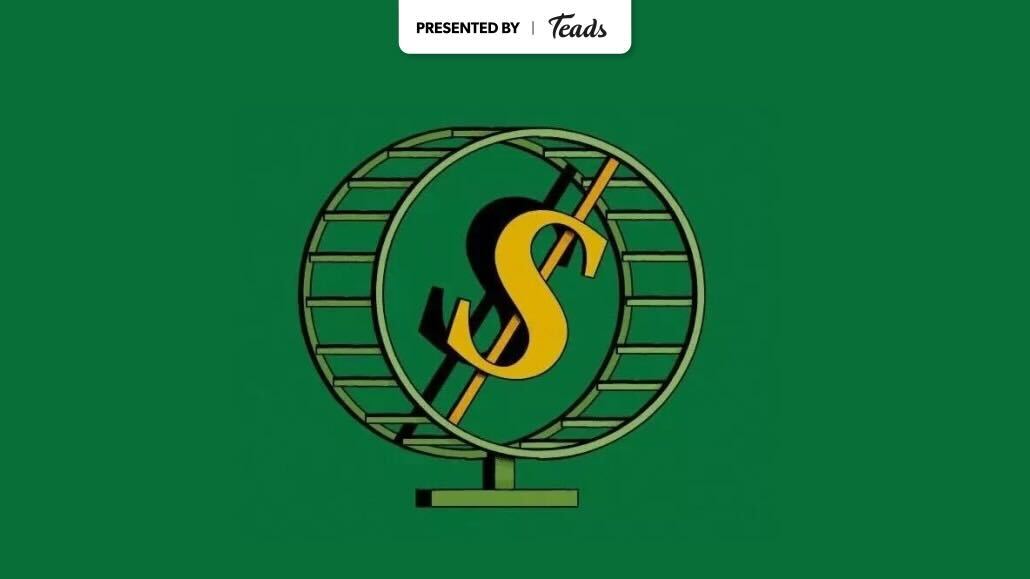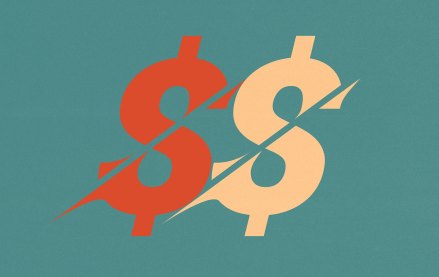Media Buying Briefing: Agencies focus on the practical rather than the theoretical at this year’s CES

This Media Buying Briefing covers the latest in agency news and media buying for Digiday+ members and is distributed over email every Monday at 10 a.m. ET. More from the series →
Thanks to Teads for sponsoring Digiday’s CES coverage and presenting this edition of the Digiday+ Media Buying Briefing, normally available exclusively to paying subscribers.
Amidst all the gadgetry and technology the Consumer Electronics Show is known for — you may now be able to smell scents in virtual reality — there was a palpable sense of sobriety emanating from the agency world. Perhaps not at the restaurants or craps tables, but certainly at the C Space, the part of CES that devotes itself to marketing and media matters.
Although all the major holding companies sent delegations of people to CES, offering curated tours of all the tech, the sessions at the C Space focused more on how to optimize and improve on what’s here and now. Less prominent were the blue-sky efforts that promise to solve all of marketing’s problems with something that’s just around the corner (much like artificial intelligence has been treated the last few years).
Discussions around improving the use of clean rooms and smarter applications of attention metrics indicate that media agencies want to focus on the here and now. For instance, Stagwell announced at CES its move to build out tech that’s here today — from augmented reality advances to better use of QR codes — by integrating them into its Marketing Cloud for clients to use when in-housing. And Omnicom Media Group beefed up its retail media network business with an announced partnership with supermarket giant Albertsons that seeks to develop more advanced targeting and measurement of connected TV.
“Traditionally the CES perspective is about five to 10 years out, but returning to CES for the first time since 2020, we’re seeing an event that offers a much better balance between the theoretical and the practical,” said George Manas, CEO of OMD Worldwide. “Less flying cars and robots on the moon, more AI and e-commerce applications that our clients can activate now. This shift has made the event more relevant and useful to marketers, and more aligned with our goal in coming to Las Vegas: to discover immediate innovation that will drive better outcomes for our clients.”
On the ad-tech side of the media world, The Trade Desk used CES to showcase its updated efforts to move beyond cookies with a strategic lynchpin to its Unified ID 2.0 offering, something called Galileo that helps advertisers better use the open internet without cookies. Again, the focus is on what can be done now to prepare for a different future — in this case, the no-longer-surprising retiring of cookies by Google.
(Speaking of Google, though it wasn’t announced per se at CES, Microsoft’s news it would fold its AI-based ChatGPT tech into its Bing search engine certainly had a lot of people in Las Vegas talking about how the news could spark a new level of competition in the search space, which Google has dominated for decades.)
Even the creator economy, as low-tech an option as you’ll find in media, has been a part of the discussions in Las Vegas. Havas announced an expanded partnership with Spotter, a startup that provides upfront funding for creators. Havas Media Group and Spotter said they plan to increase investments in YouTubers with the aim of helping brands expand their presence on YouTube by collaborating with diverse creators. The partnership follows a 2022 commitment with Spotter, which says it has deployed 30% of capital to creators of multicultural backgrounds. (So far it has paid out $740 million to YouTubers and plans to reach $1 billion this year.)
Spotter and Havas didn’t disclose any monetary commitments at CES, but Spotter CMO Galvea Kelly told Digiday last year that creators are driving “a societal shift” in the overall economy. That’s led a number of brands, agencies and tech companies to partner with diverse creators through a number of investment commitments and other programs.
“The one thing that YouTubers and others have is this really intense connection with their fans versus a television show,” said Spotter founder and CEO Aaron DeBevoise. “The opportunities to create more value for themselves is so big, but the issue is it has to be very simple.”
No doubt some media agencies will return back to the office with visions of newfangled tech to test out and find application. But given economic concerns about how 2023 will shake out, thinking more about today’s tech holds the potential to generate revenue now. — Marty Swant and Antoinette Siu contributed to this reporting
Color by numbers
Out of home advertising may be making a post-Covid comeback, at least according to an analysis by the Out of Home Advertising Association of America (OAAA) and financial advisory firm Solomon Partners. Their 2023 benchmark measured ad effectiveness based on recall comparison across television, audio, online, OOH and print from 2017 to 2022. Results show that OOH ads generate higher ad recall with consumers compared to streaming, podcasts and radio, as well as online and print formats, and OAAA expects OOH ad spend for 2023 to outpace total media growth overall. — Antoinette Siu
More stats:
- Recent findings from OAAA-Harris Poll research showed that 49% of adult consumers are noticing OOH ads more than one year ago as Americans transition in post-Covid.
- OOH printed ads were 38% to 86% effective in ad recall, while digital ones were 46% to 84% effective.
- By comparison linear TV generated a 20% to 60% effectiveness in ad recall, while streaming was slightly higher between 28% to 72%. In audio, podcast ads seemed more effective with 59% to 77% ad recall compared to radio with 11% to 46%.
- Online ads actually saw some of the lowest numbers. Mobile ads were 12% to 57% effective in ad recall, while desktop ads were 9% to 48% effective.
Takeoff & landing
- BMW of North America put its creative and media agency work up for review. Defending media-side agencies include IPG’s UM as media agency incumbent, as well as independent Anchor, which handles social.
- Jay Friedman was promoted from president to CEO of independent media and marketing services firm Goodway Group. Charged with expanding the company’s growth into retail media and measurement, Friedman replaces David Wolk, who becomes executive chairman.
- TV ad sales firm Ampersand launched an automated addressable technology for its main customers, cable operators that represent 70 percent of all addressable TV homes in the U.S.
- Independent OH Partners has re-formed into an independent holding company called The Harkey Group, which will house five offerings: a production company, a creative agency, a consulting firm, a market research company, and OH itself.
Direct quote
“Instead of starting with the technology and trying to figure out where to deploy it, try to come up with the problems we’re trying to solve and what is the best technology [that] solves it.”
— Raja Rajamannar, chief marketing & communications officer, and president of healthcare for Mastercard, on the value CES can and should offer
Speed reading
- Digiday senior media editor Tim Peterson took a long-tail look at how the TV upfront marketplace might mutate over time.
- Digiday platforms reporter Krystal Scanlon examined the consequences and implications of the European Union’s privacy watchdog’s massive fine levied against Meta.
- Digiday’s senior reporter for marketing & technology Marty Swant reviewed the most interesting uses of Web3 and the metaverse by marketers last year — part of Digiday’s The 2023 Notebook series, which can be viewed in its entirety here.
More in Media Buying

Why Pinterest wants to buy tvScientific, and what it signals for the CTV ads business
Corporate development sources estimate the deal valuation to be above $300 million, claiming tvScientific’s gross revenue is approximately $100 million.

Ad Tech Briefing: How the experts predict digital ad spend will pan out in 2026
Advertisers are placing greater emphasis on price and performance, often at the expense of transparency and control.

Crossmedia and Mile Marker make moves now to grow in their rosters in 2026
Both independents made executive moves to harness a potential windfall of clients leaving the holding companies for better service and results.








